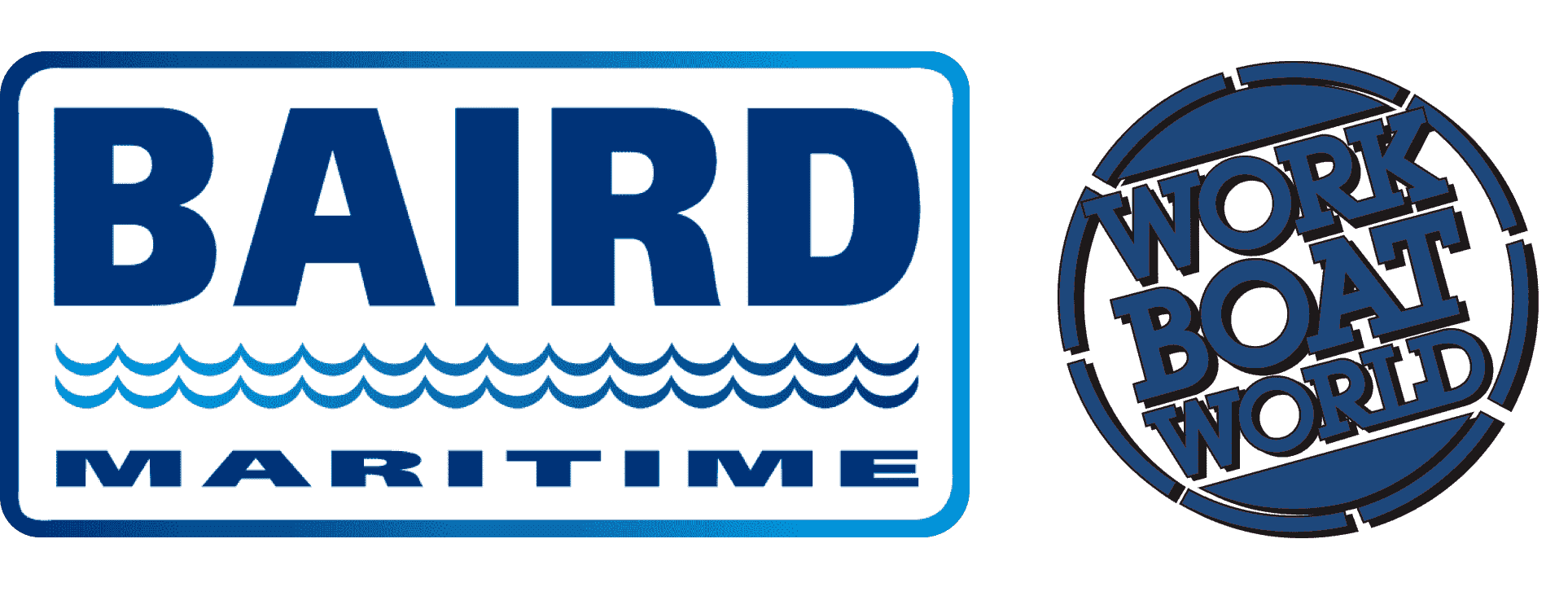VESSEL REVIEW | San Marco VII – New crabber/trawler to operate in Canada's Gulf of Saint Lawrence
Pêcheries Michel Turbide, a fishing company owned by boat skipper Marco Turbide of Quebec, has taken delivery of a new combination trawling and crab fishing vessel built by Canadian shipyard Chantier Naval Forillon. The Navanex-designed San Marco VII will be operated primarily in the Gulf of Saint Lawrence, where it will fish for redfish and snow crab depending on the season.
The newbuild has a steel hull and an aluminium superstructure. Power is provided by a Yanmar main engine driving a Kaplan four-blade propeller to deliver speeds of up to 10 knots. The engine produces a high enough torque for trawling operations.
The vessel features a bulbous bow that can help improve fuel efficiency and reduce pitching. Two recessed fin stabilisers are also fitted to dampen motion, ensuring stability while underway and when hauling catch on board. Analysis of the hull’s performance showed that efficiency can increase by 10 or 15 per cent depending on the vessel’s condition.
The fishroom can hold up to 130 tonnes of redfish or 32 tonnes of snow crab. Rearranging the equipment layout to facilitate the transition between trawling and crab catching can be completed in two days.
“This project was undertaken differently from the usual because the client practically gave us carte blanche on the design, with the guidelines being only ‘the most beautiful boat, the best of its kind, and the most optimised fishing vessel’,” Hubert Simard, Director of Navanex, told Baird Maritime. “It was with these guidelines that we began the design work in 2022, and it is under these directives that we finalised the project with Chantier Naval Forillon in July of this year.”
Broad fishing gear selection for year-round operations
Simard explained that the owner was committed to ensuring operational excellence and crew comfort, and so the brief outlined a number of objectives such as versatility for a range of fishing operations including crabbing and trawling; superior performance in various sea conditions including rough and cold waters; minimised operating costs courtesy of an efficient hull design and advanced fuel-saving technologies; the latest systems for ensuring freshness of catch; improved overall safety; ergonomic workspaces; a comprehensive navigation and control station; and a sleek, professional look.
“By addressing these requirements, we aimed to deliver a vessel that not only meets the operational needs of the owner but also stands out in terms of efficiency, safety, and comfort,” said Simard.
To ensure year-round operation, San Marco VII is fitted with two bottom trawls at the stern, though the vessel can be easily equipped with a pelagic trawl net located forward of amidships. Simard said this layout provides opportunities to trawl during the summer and the autumn with the bottom trawls and in winter with the pelagic trawl in the Gulf of Saint Lawrence under Canada regulation. In the spring, the vessel can continue fishing for snow crab, and that gives the owner the chance to fish during the entire year.
The fishing deck layout is open and offers a clear view from the hydraulic control station located aft of the wheelhouse, from where an operator has a full view of the trawling equipment. The deck can be fitted with a conveyor to carry the fish from the fish boxes to the hold. For crab fishing, the shelterdeck on starboard is removable, while a crab boom, a hauler and a crab table can be easily installed on board.
The hydraulic components draw power from a Volvo Penta D13 IMO Tier III-compliant engine. The vessel is also fitted with a KeyPower KP26 bow thruster that provides additional lateral manoeuvrability for operating in local harbours.
“The goal was to build a vessel with a lower environmental footprint,” Simard told Baird Maritime. “To achieve this, we chose a power grid made of two generator sets and a power management system. In this way, we are able to reduce the size of the generators to a level where each can support at least the essential load and if non-essential loads are required, the second is started and used to provide the energy required in load sharing mode.”
Designed with input based on real-world conditions
For Navanex, the main challenge in designing the vessel was related to the creation of a multipurpose fishing deck that met both ergonomic and efficiency requirements. This aspect of the vessel required a delicate balance between functionality, comfort, and operational effectiveness.
“The fishing deck needed to be versatile enough to support various types of fishing operations,” said Simard. “Designing it to be highly functional while ensuring ease of use for the crew was a complex task. We had to incorporate features that would help preserve the freshness of catch, enhance productivity, and minimise the physical strain on the crew.”
“They observed how different types of equipment were used in practice and they gained insights into how the deck’s layout could be optimised for real-world conditions,” said Simard.
The engineers’ firsthand experience also provided critical feedback that helped the company refine the design, ensuring that the fishing deck would not only meet but also exceed the ergonomics and efficiency requirements set by the owner.
Simard explained that designing San Marco VII provided valuable insights that will significantly influence Navanex’s approach to future projects. These include the importance of real-world testing through additional field-based research (as demonstrated by the two engineers’ spending time aboard a fishing vessel); and gaining a detailed understanding of the crew’s physical interactions with the vessel to ensure more effective and comfortable designs.
“Future projects will benefit from a more comprehensive analysis of ergonomic needs and the integration of adaptive features to accommodate various operational scenarios,” he told Baird Maritime.

